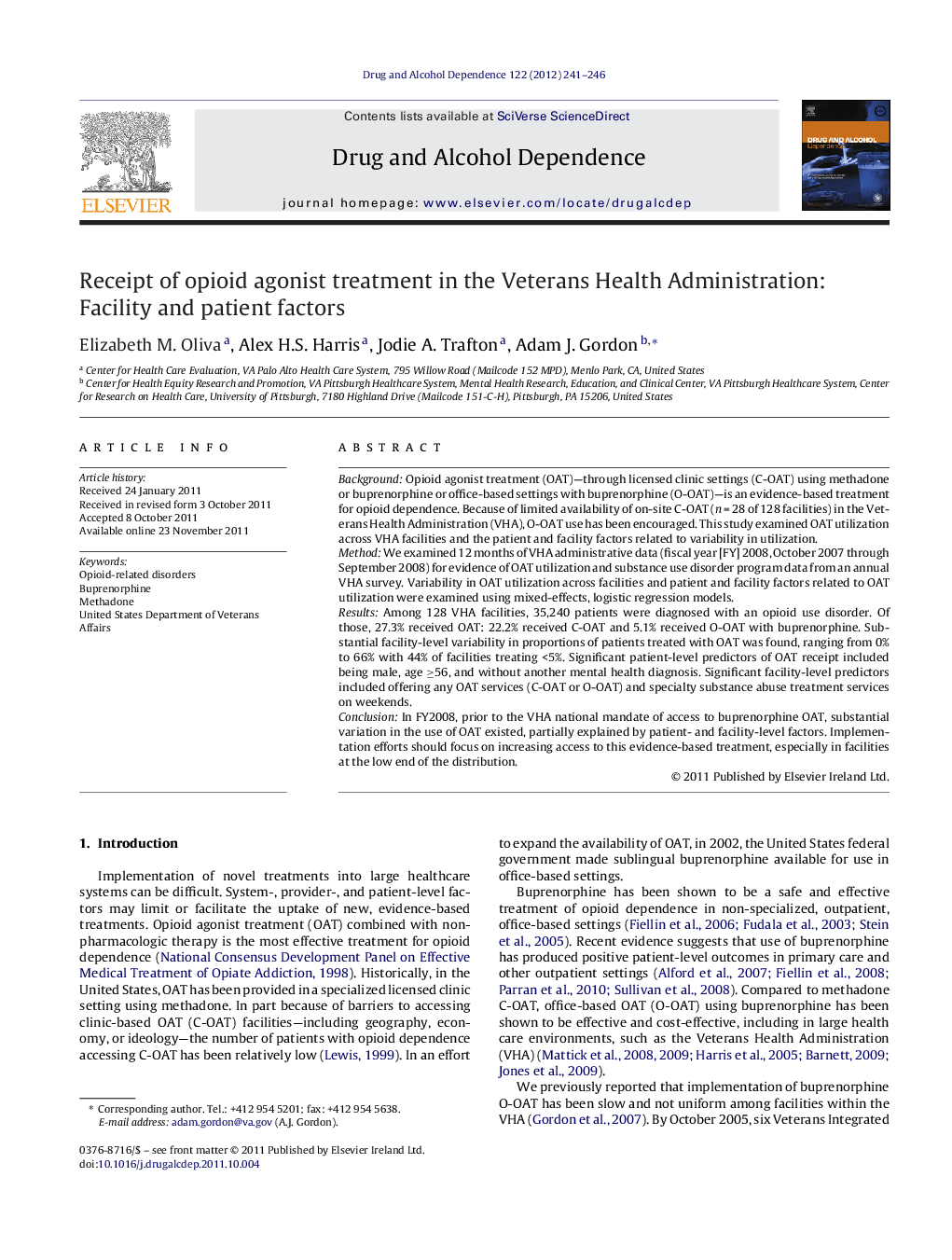| کد مقاله | کد نشریه | سال انتشار | مقاله انگلیسی | نسخه تمام متن |
|---|---|---|---|---|
| 1070171 | 949336 | 2012 | 6 صفحه PDF | دانلود رایگان |

BackgroundOpioid agonist treatment (OAT)—through licensed clinic settings (C-OAT) using methadone or buprenorphine or office-based settings with buprenorphine (O-OAT)—is an evidence-based treatment for opioid dependence. Because of limited availability of on-site C-OAT (n = 28 of 128 facilities) in the Veterans Health Administration (VHA), O-OAT use has been encouraged. This study examined OAT utilization across VHA facilities and the patient and facility factors related to variability in utilization.MethodWe examined 12 months of VHA administrative data (fiscal year [FY] 2008, October 2007 through September 2008) for evidence of OAT utilization and substance use disorder program data from an annual VHA survey. Variability in OAT utilization across facilities and patient and facility factors related to OAT utilization were examined using mixed-effects, logistic regression models.ResultsAmong 128 VHA facilities, 35,240 patients were diagnosed with an opioid use disorder. Of those, 27.3% received OAT: 22.2% received C-OAT and 5.1% received O-OAT with buprenorphine. Substantial facility-level variability in proportions of patients treated with OAT was found, ranging from 0% to 66% with 44% of facilities treating <5%. Significant patient-level predictors of OAT receipt included being male, age ≥56, and without another mental health diagnosis. Significant facility-level predictors included offering any OAT services (C-OAT or O-OAT) and specialty substance abuse treatment services on weekends.ConclusionIn FY2008, prior to the VHA national mandate of access to buprenorphine OAT, substantial variation in the use of OAT existed, partially explained by patient- and facility-level factors. Implementation efforts should focus on increasing access to this evidence-based treatment, especially in facilities at the low end of the distribution.
Journal: Drug and Alcohol Dependence - Volume 122, Issue 3, 1 May 2012, Pages 241–246